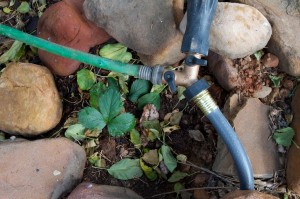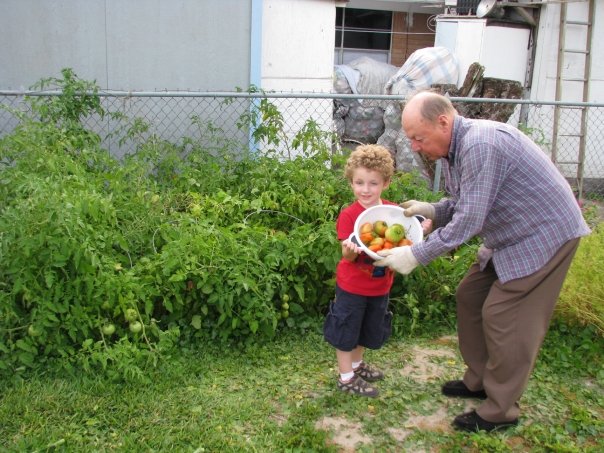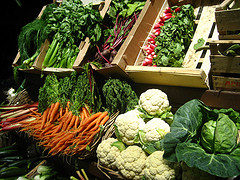 Growing your own vegetables serves several purposes. For one, doing so makes you truly self-sufficient, especially if you are concerned about the validity of organic produce. By planting your own crops, you know exactly which pesticides and fertilizers (if any) have been used. Knowing that your vegetables have been picked at the peak of ripeness is worth the time and effort put into a garden. Also, growing your own vegetables saves you money, as you no longer have to buy fruits and vegetables from the grocery store or local farmers’ markets. The only downfall is the fact that your water bill will rise during your prime growing season, and your crops will be susceptible to drought. Both of these things can be prevented, thanks to the tips below:
Growing your own vegetables serves several purposes. For one, doing so makes you truly self-sufficient, especially if you are concerned about the validity of organic produce. By planting your own crops, you know exactly which pesticides and fertilizers (if any) have been used. Knowing that your vegetables have been picked at the peak of ripeness is worth the time and effort put into a garden. Also, growing your own vegetables saves you money, as you no longer have to buy fruits and vegetables from the grocery store or local farmers’ markets. The only downfall is the fact that your water bill will rise during your prime growing season, and your crops will be susceptible to drought. Both of these things can be prevented, thanks to the tips below:
– Set up a rain barrel. Saving rain water and using it to water your garden, instead of turning on the spigot attached to your house is both environmentally friendly and easy on your water bill. Many rain barrels are repurposed, so make sure to clean it thoroughly before setting it up in your yard. Otherwise, your collected water may end up being contaminated by whatever chemicals or compounds were formerly stored in the barrel. Make sure that you set the barrel close enough to your garden to make watering it a simple task. It must also be placed under a down spout that’s connected to your houses gutter system in order to collect enough water to be useful.
– Water during cooler parts of the day. Watering your garden and flowerbeds during the hottest parts of the way (usually mid-day to early afternoon) will cause the water to evaporate before it even hits the plants, thus wasting water.
– Spread mulch around established plants. This will insulate the ground and keep the soil moist, so that you won’t need to water them as much. Do not spread the layer so thick that little to no water reaches the soil, but at the same time, a too-thin layer will not provide enough insulation – around 3 or 4 inches is the best thickness.
– Know how much water each plant needs. Established plants need less water than newly planted ones. With a good layer of mulch in place, you will most likely only need to water an established plant once a week, while a newly planted vegetable garden, some shrubs or flowering plants will need plenty of water in order for their root systems to grow and become acquainted to their new surroundings.
– Watch where you place your sprinklers to make sure that you aren’t watering the sides of your house and garage, your gardening shed, or your driveway. This just wastes water.
– Use a soaker hose or drip irrigation system. Depending on the size of your garden and the level of sophistication that you feel like putting into your arrangement, an irrigation system lets you control water down to the drop. The same goes for a soaker hose, which is much simpler to set up.
Find Out More About the Food4Wealth System Now and Learn How to Make Your Garden Amazing
 Do you want to eliminate your fresh food bill?
Do you want to eliminate your fresh food bill?
If you’ve ever wanted to be self sufficient and grow your own food, then I highly recommend that you check out the Food4Wealth system for growing quality food without all the problems.
The Food4Wealth system can help you build a sustainable garden that regenerates all by itself. Click here to see if it is right for you.




I also use a water catch system from my roof. I have 2 50 gal barrels that I use up before I have to turn on the hose. great article. Preppers have to learn to conserve their resources.
Thank you so much for the comment! Sounds like you have a great system.